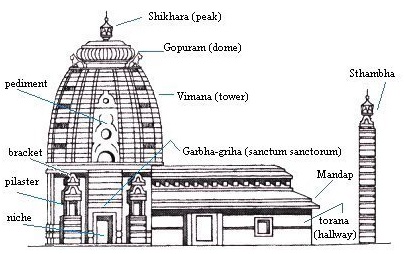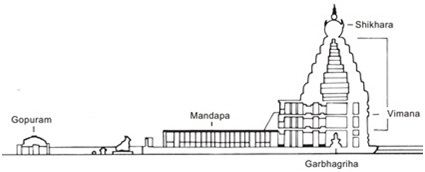

Context
Archaeological Survey of India of Ministry of Culture organized a two-day international conference ‘Devayatanam - An odyssey of Indian temple architecture' at Karnataka's Hampi.
About
About the conference:
- The conference aims to deliberate upon the philosophical, religious, social, economic, technical, scientific, art and architectural aspects of temple.
- It also intends to initiate a dialogue on the evolution and development of the various styles of temple architecture such as the Nagara, Vesara, Dravida, Kalinga and others.
- The conference will have eminent scholars discussing on the various facets of the great temples of India.
Significance of Temples:
- Temple being an integral part of the Indian life and its ecosystem in its own ways since the time immemorial is perceived as the manifestation of Purush and Prakriti both and is seen as the mirror of the cosmos.
- Temple construction was practiced as a pious act not only in the subcontinent but the idea also travelled to the nearest neighborhood such as south-east and East Asia.
- The art and technique of temple architecture spread from India to other regions and how this art was modified; to suit the local requirements and it in turn inspired the development of new architectural styles.
- For centuries, temples have been central to society and culture, to science and technology, to art and economy, to rituals and traditions, to devotion and spirituality, to the past and future.
About Hampi:
- Hampi is a UNESCO World Heritage Site in India located near Hospet town in the Karnataka state, India.
- This historic town is also the “World’s Largest Open-air Museum” and covers an area of nearly 29 sq km.
- Site of Hampi comprise mainly the remnants of the Capital City of Vijayanagara Empire (14th-16th Cent CE), the last great Hindu Kingdom.
- Hampi’s spectacular setting is dominated by river Tungabhadra, craggy hill ranges and open plains, with widespread physical remains.
- Dravidian architecture flourished under the Vijayanagara Empire and its ultimate form is characterised by their massive dimensions, cloistered enclosures, and lofty towers over the entrances encased by decorated pillars.
- The Vitthla temple is the most exquisitely ornate structure on the site and represents the culmination of Vijayanagara temple architecture.
- It is a fully developed temple with associated buildings like Kalyana Mandapa and Utsava Mandapa within a cloistered enclosure pierced with three entrance
- In addition to the typical spaces present in contemporary temples, it boasts of a Garuda shrine fashioned as a granite rathaand a grand bazaar street.
- This complex also has a large Pushkarani (stepped tank) with a Vasantotsava mandapa(ceremonial pavilion at the centre), wells and a network of water channels.
|
Different style of Indian Temple Architecture:
|




